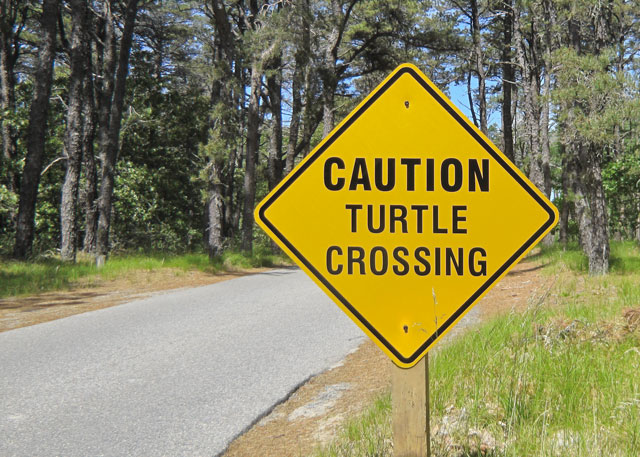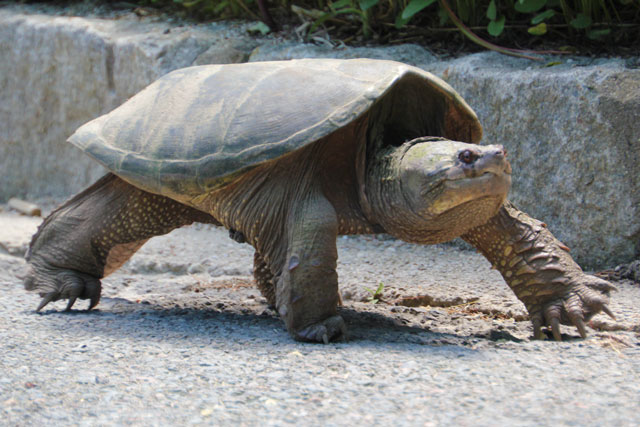To get to the other side…to lay her eggs!

Turtle Crossing sign at Wellfleet Bay Wildlife Sanctuary
In late spring and early summer, adult female turtles cross roads in search of nest sites. Each species has a different habitat requirement, but when searching for a nest site they usually choose sandy or loose soil in lawns, tilled or mowed fields, roadsides, and occasionally backyard compost piles.
Many people assume that something is wrong when a turtle is crossing the road. People, with best intentions, mistakenly attempt to return it to water, take it home, or, take it somewhere that seems safer and release it. But the best thing to do is leave it alone. The turtle knows where it wants to go and may have been nesting in the same spot for many years—or even decades.
Small Turtles
If you spot a small turtle that is in danger of being hit by cars, you can protect it by temporarily blocking traffic if it is safe to do so. You can also speed things along by carefully picking it up by its carapace (the top half of its shell) and moving it to the other side of the road, in the direction it was already headed.
Snapping Turtles
Snapping turtles, however, can be dangerous and should not be handled. They are surprisingly fast for their size and can extend their necks the length of their carapace. Never pick up a snapping turtle by the tail because you could seriously injure it.

Snapping Turtle at Drumlin Farm © Mass Audubon
Learn all about turtles on our website and check out our Turtles By the Numbers.

